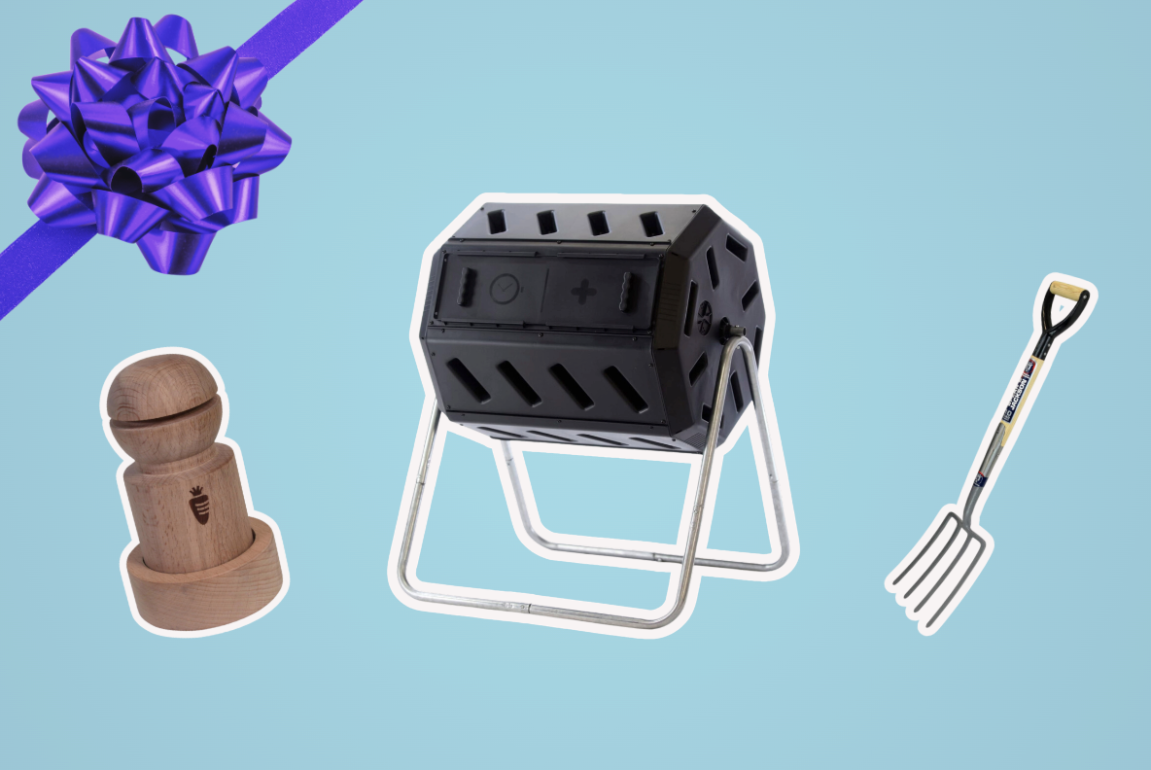We may earn revenue from the products available on this page and participate in affiliate programs. Learn More ›
If you’re not familiar with the world of gardening, finding a gift for a gardener or a friend or family member with a green thumb might feel intimidating. Whether you’re shopping for a beginner or an expert gardener, our gift guide helps narrow down the options to best suit the recipient you have in mind. Below you’ll find a variety of items, from garden tools to seed kits and potting benches, some of which we’ve personally tested. These gifts will not only enhance the gardening experience but also show whomever you’re buying for that you put thought behind the gift.
Browse Etsy’s Personalized Gifts for Gardeners
See Gifts for Gardeners at The Home Depot
The Best Gifts for Gardeners
From seed kits to handmade pots to premium gloves, the best gifts for gardeners can be found below in our comprehensive guide.
1. Atree Soil pH Meter

For gardeners who want to ensure their crops grow healthy and strong, the Atree Soil pH Meter is an excellent gift. We reviewed some of the best soil test kits on the market, and this one offered the best bang for the buck. With no battery necessary, this soil tester can be inserted 4 to 6 inches in the ground to get a reading on the moisture level, pH value, and sunlight intensity so the gardener can choose plants that match the availability..
What our tester says: “While this tester didn’t determine things like specific nutrient levels, I found that it would be great for gardeners who are happy with the health of their soil but would like to know if the light is adequate or whether the soil is draining well.” –Glenda Taylor, Product Reviews tester and staff writer
Get the Atree Soil pH Meter at Amazon for $3.99
2. Gardyn Studio
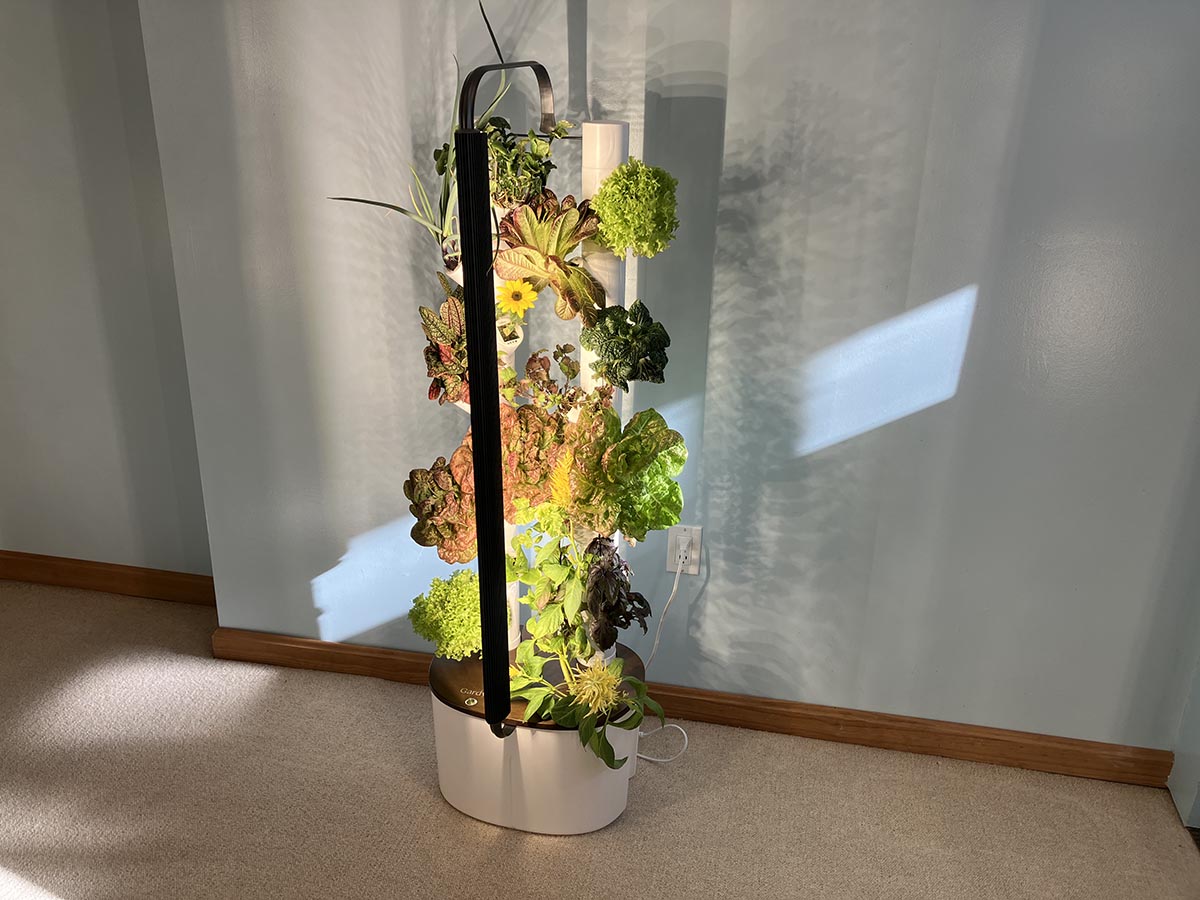
Weather won’t matter when it’s possible to produce any time of year in any home with just 1.4 square feet of space. The Gardyn Studio is an indoor hydroponic system that can sustain up to 16 plants at a time. It includes 16 seed pods and plant food to get growing right away. Plus, thanks to its LED lights sunlight is not needed. It’s also app-ready for setting up light and watering schedules. With the Gardyn Studio, your plant-loving loved one can always have fresh produce ready.
What our tester says: “I found the size of the Gardyn Studio to be very convenient. This hydroponic system makes it simple to grow fresh produce at home and is low maintenance.”—Jenn Ryan, Product Reviews tester and writer
Read our full review: The Gardyn Studio
Get the Gardyn Studio at Gardyn for $399.20 with code
3. Happy Hydro Trimming Scissors
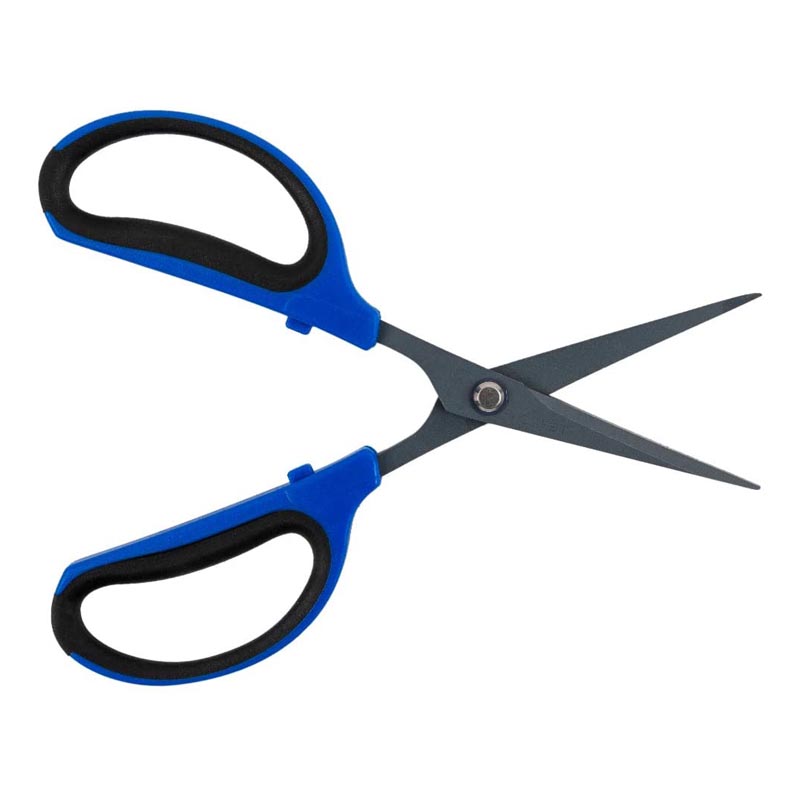
Whether they’re pruning rose bushes or putting together flower arrangements, gardeners can turn to the Happy Hydro Trimming Scissors for blades that stay sharp. The blades of these scissors are made of nonstick Teflon and are corrosion-resistant to maintain a razor-sharp edge for years. The scissors also have an ergonomic, comfort-grip handle to make long hours in the garden less tedious.
Get the Happy Hydro Trimming Scissors at Amazon for $12.95
4. Carrot Design Newspaper Pot Maker

For gardeners of all ages, the Carrot Design Newspaper Pot Maker helps create biodegradable starter pots from newspaper. With this wooden tool, users can roll a strip of newspaper around the handle, then press and fold the paper into the base to create a 2-inch diameter paper pot, no glue required. Paper pots can then be filled with soil and seeds and transported into a garden, where the paper will decompose quickly.
Get the Carrot Design Newspaper Pot Maker at Amazon for $14.29
5. Miracle-Gro Water Storing Crystals
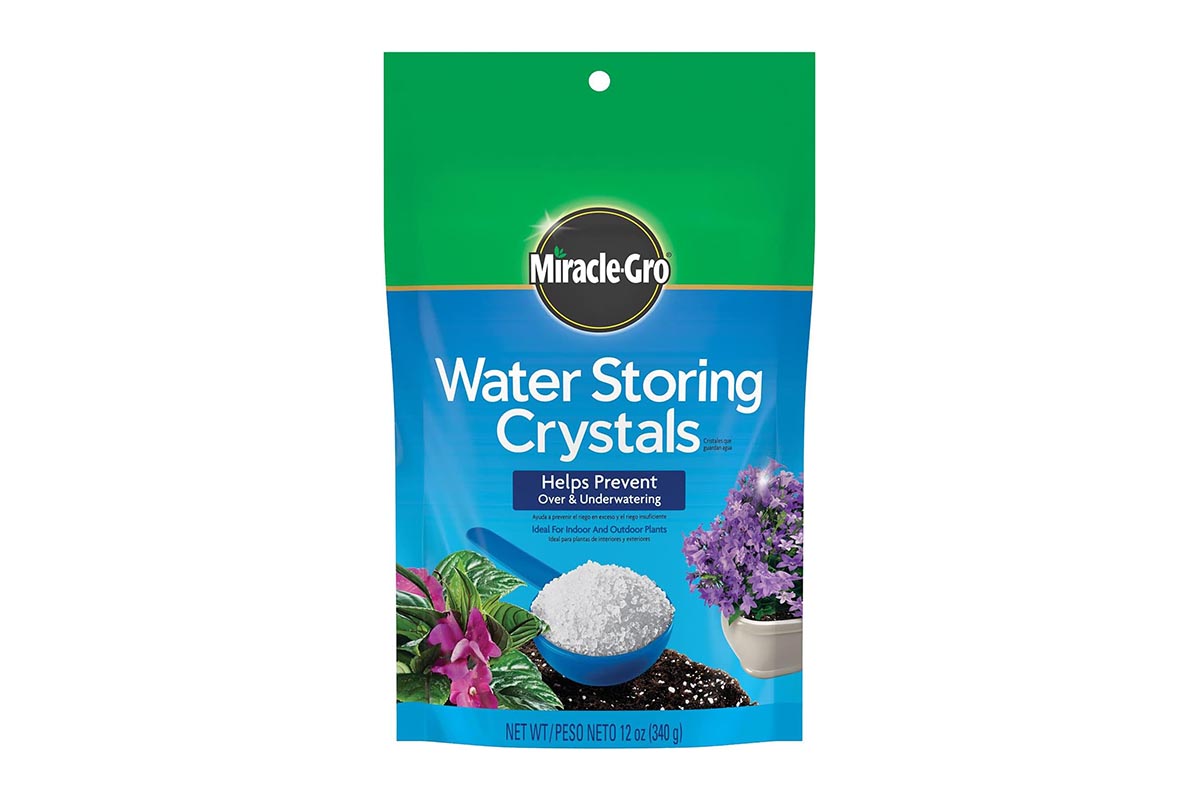
Sometimes even the most diligent gardeners experience dry conditions and find it tough to keep up with the watering. Miracle–Gro’s Water Storing Crystals are an ingenious product that helps prevent both over- and underwatering. Simply mix the crystals into potting soil following the package instructions. Then, water the plant thoroughly. After a couple of hours, water it again. The crystals will absorb water and become activated, so they can slowly release hydration when the plant needs it.
Get the Miracle-Gro Water Storing Crystals at Amazon for $9.98
6. Extra Large Repotting Mat
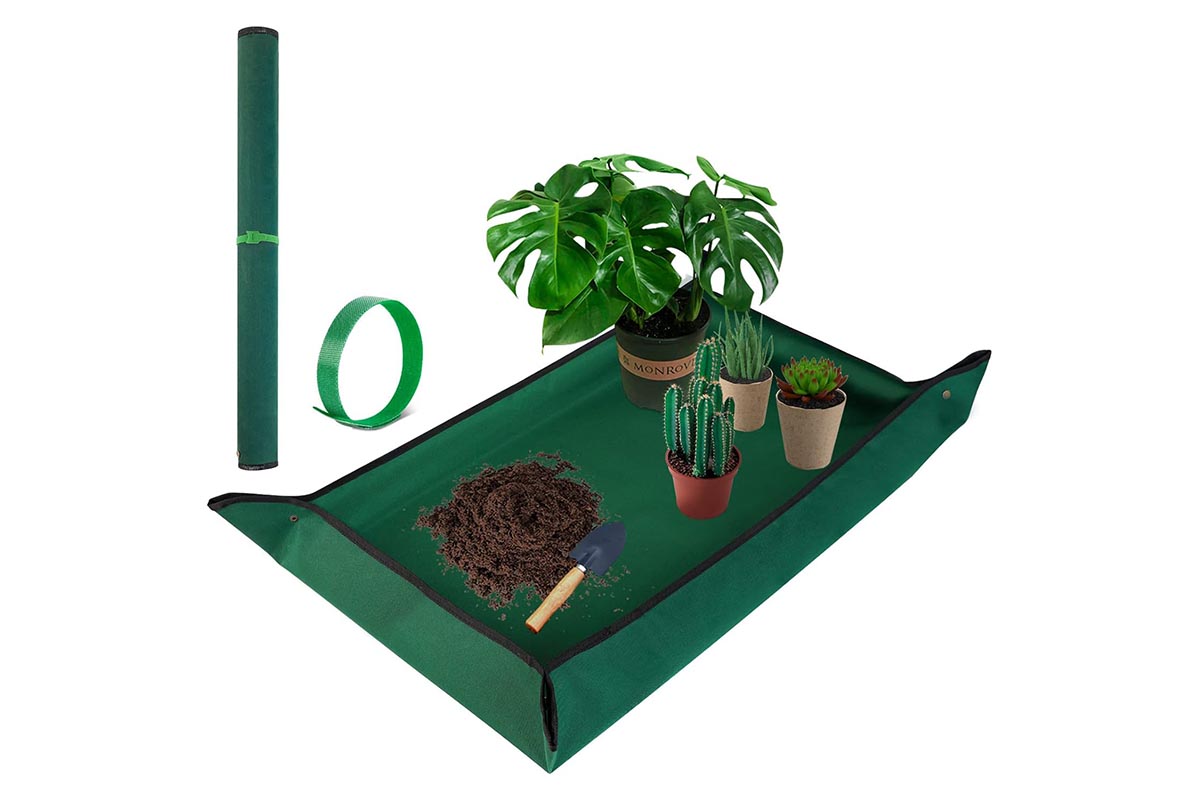
Repotting plants when they’ve outgrown their containers is a task that many plant lovers dread, especially if they live in homes without a yard or garden. The process can get messy, with soil and potting mix getting all over the floor. This repotting mat provides a simple yet effective solution, measuring 43 inches long by 29 inches wide with raised sides to keep the repotting mess contained.
Get the Extra Large Repotting Mat at Amazon for $9.50
7. Nisaku Hori-Hori Weeding & Digging Knife

The Nisaku Hori-Hori Weeding & Digging Knife includes serrated and straight-edge blades, which makes it a great gadget for gardening, landscaping, and camping. Made with top-of-the-line stainless steel, the knife comes with inch markings on the blade to ensure items get planted at the perfect depth. A versatile garden tool in a gardener’s arsenal, this tool is a multitasker that makes quick work of tedious tasks.
Get the Nisaku Hori-Hori Weeding & Digging Knife at Amazon for $14.24
8. Plant Lady Hat
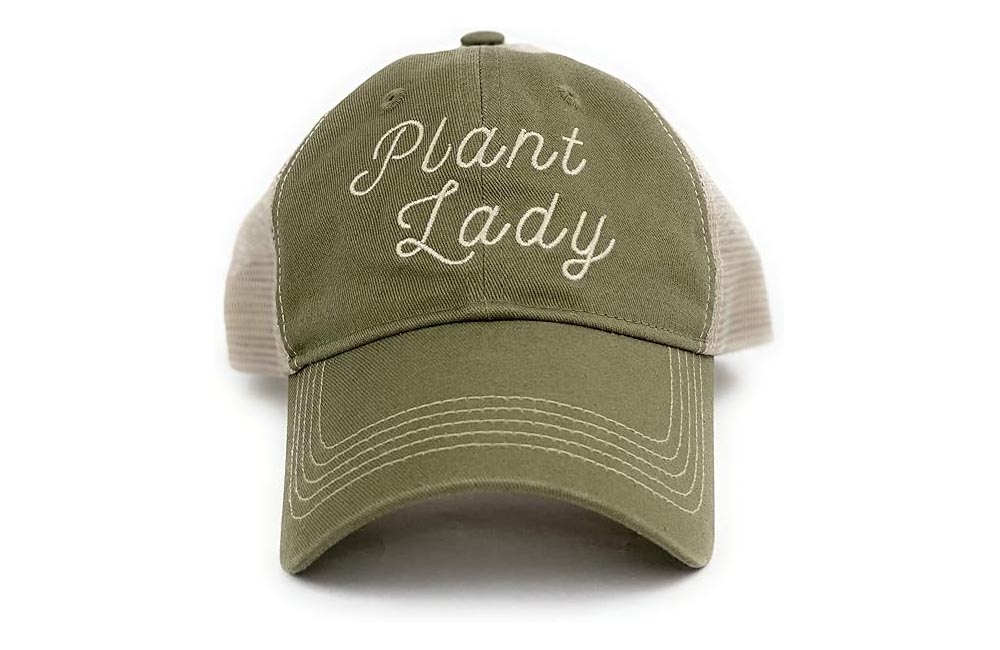
What can you buy for the person who has every gardening tool and accessory they could possibly need? This highly-rated plant lady hat will proclaim their love of plants to the world and possibly even be a conversation starter that will help them connect with fellow plant lovers. It’s one-size-fits-all, with an adjustable snap closure.
Get the Plant Lady Hat at Amazon for $21.97
9. Exemplary Gardens Rose Pruning Gloves
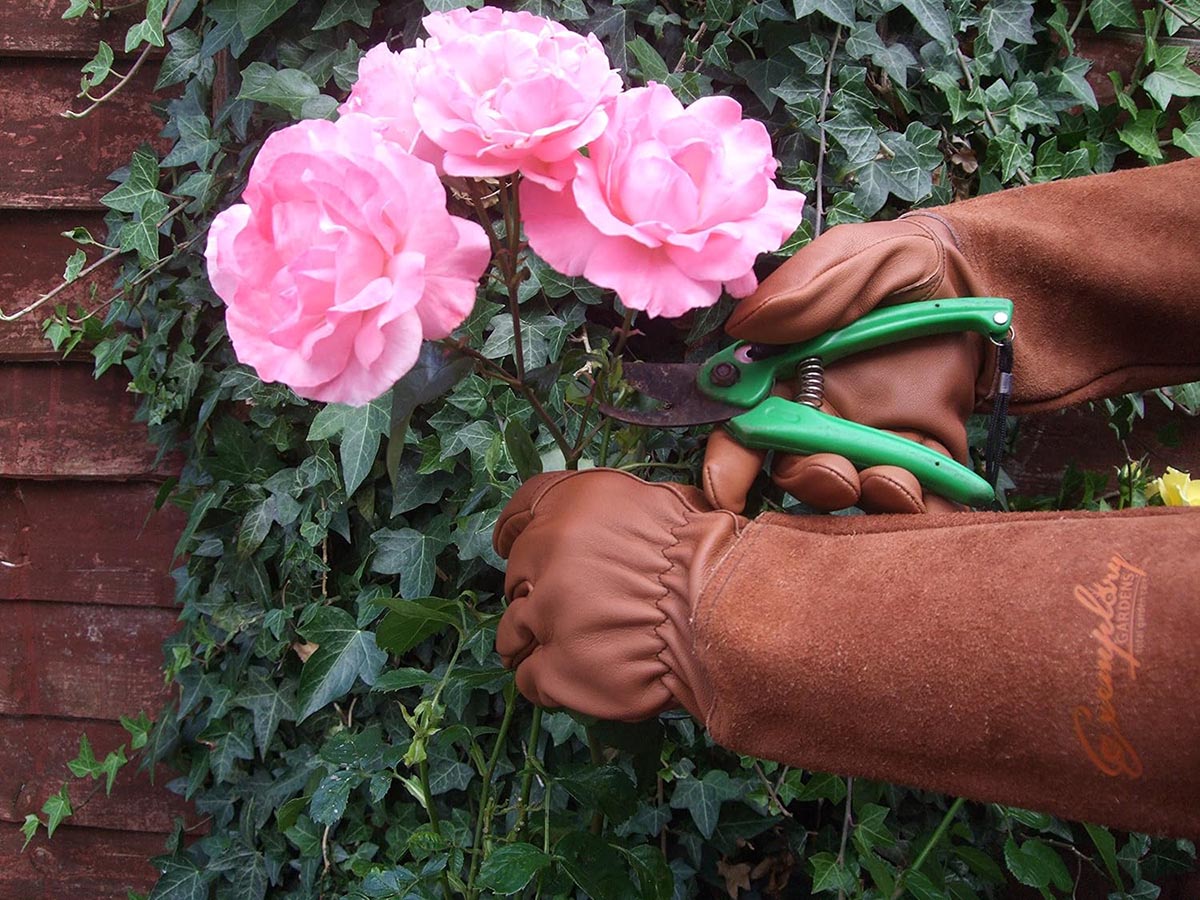
For the gardener who puts safety first, the Exemplary Gardens Rose Pruning Gloves ensure that hands stay free of scratches or punctures when pruning roses or other potentially harmful plants. These medium-sized gloves are made of premium goat grain and include extended split suede cuffs to protect arms. Although they help reduce cuts and scrapes, the gloves are flexible enough to perform fine motor tasks such as planting or deadheading roses.
Get the Exemplary Gardens Rose Pruning Gloves at Amazon for $20.98
10. Spade to Fork Organic Indoor Salsa Garden Kit

Gardeners who want to step into the farm-to-table lifestyle will appreciate this Salsa Garden Kit from Spade to Fork. The kit includes an indoor growing system with organic San Marzano tomato, cherry tomato, jalapeno, cilantro, and green onion seeds. For growing, it includes five compostable peat pots and five potting soil discs (also both organic), as well as plant markers and a growing guide. The kit includes a detailed guide on germination, transplanting, and harvesting.
Get the Spade to Fork Organic Indoor Salsa Garden Kit at Amazon for $29.97
11. Seeding Square Planting Tool
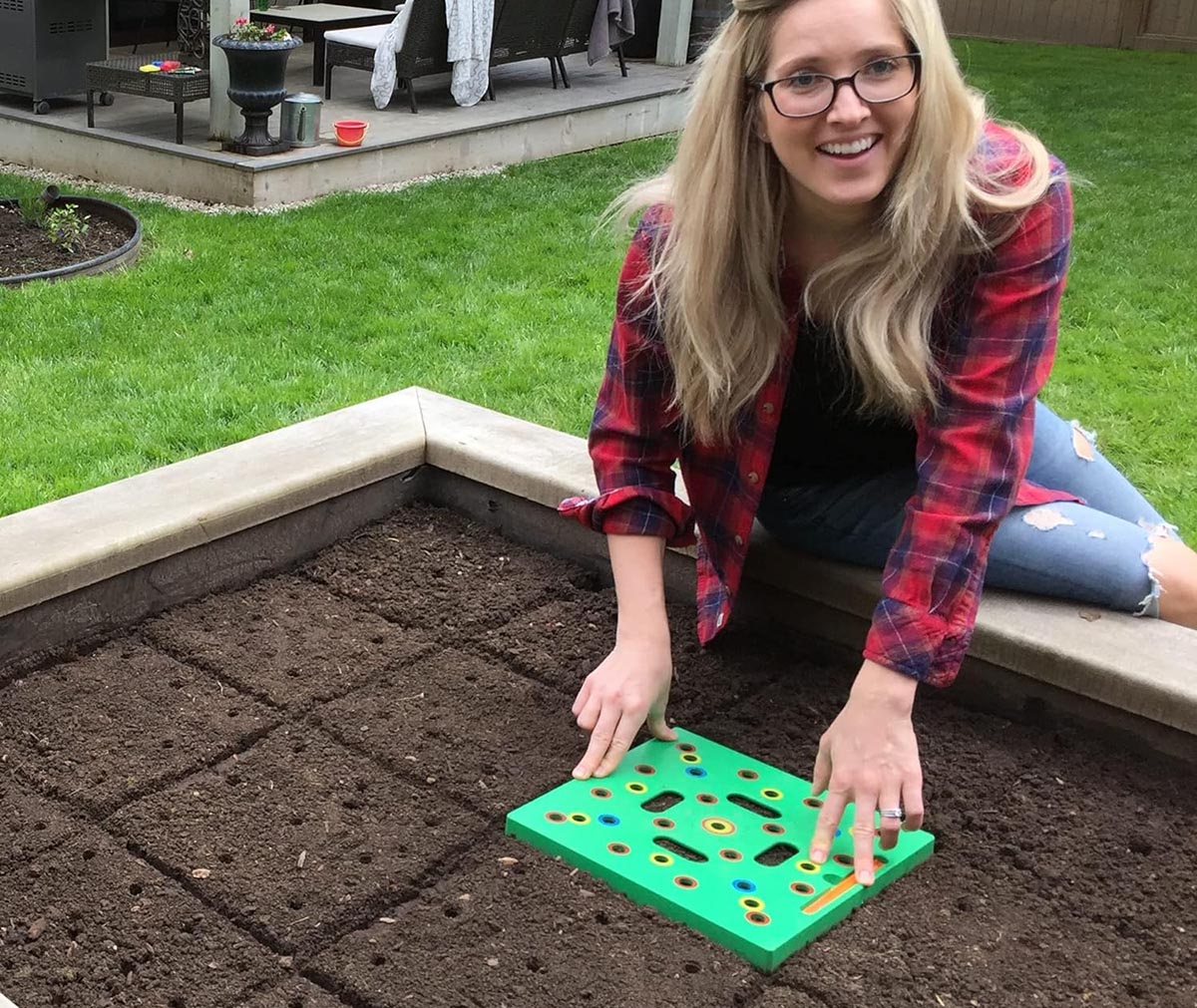
Thanks to Seeding Square’s Planting Tool, gardeners can create perfectly organized, properly spaced grids for small gardens. This nifty seed-spacing tool includes a color-coded planting guide to help gardeners figure out how far apart to plant types of vegetables. Seeding Square’s Planting Tool is a particularly excellent gift for beginner gardeners, gardeners who want to involve their kids, or those with small spaces.
Get the Seeding Square Planting Tool at Amazon for $29.95
12. Spear & Jackson Neverbend Professional Digging Fork
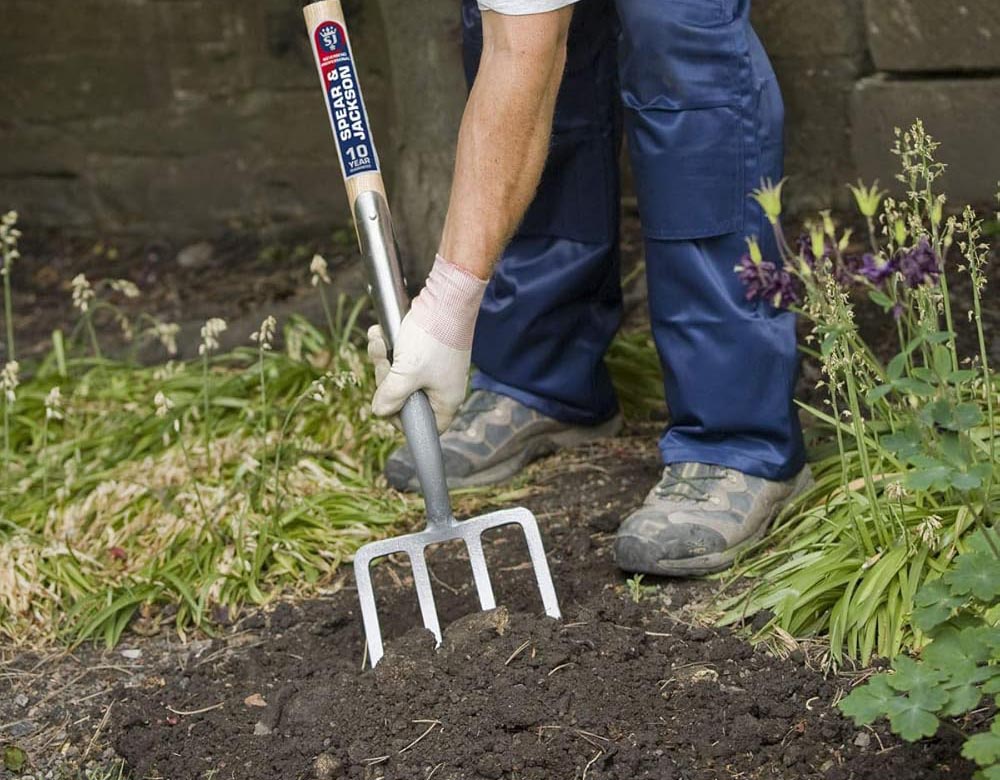
A quality pitchfork is an invaluable tool for gardeners, simplifying the digging and mulching process. We tested five of the best pitchforks and the Spear & Jackson Neverbend Professional Digging Fork was our favorite budget-friendly model thanks to its ergonomics, strength-to-weight ratio, and quality powder-coated forged carbon steel head. It makes a great gift for green thumbs with large garden beds or landscaped areas.
What our tester says: “My test garden’s clay soil presented no problem for the Spear & Jackson Neverbend digging fork. The tines easily penetrated the compacted soil to maximum depth, and as the name claims, the stout handle and riveted connections held up to hard work without bending, cracking, or loosening.” –Mark Wolfe, staff writer
Get the Spear & Jackson Neverbend Professional Digging Fork at Amazon for $44.74
13. SkyMall Mason and Leafcutter Cedar Solitary Bee House

The SkyMall Mason and Leafcutter Cedar Solitary Bee House is constructed to attract red mason, leafcutter, and other solitary bees, which are non-swarming, friendly species that are safe around children and pets. The hole sizes in the house help attract these specific bees, and the house’s stacking trays can be easily opened for inspection or cleaning. Since bees help pollinate flowers, fruits, and vegetables, gardeners will appreciate a bee house that encourages visits from friendly buzzers.
Get the SkyMall Mason and Leafcutter Cedar Solitary Bee House at Amazon for $34.99
14. Home Grown Bonsai Tree Kit
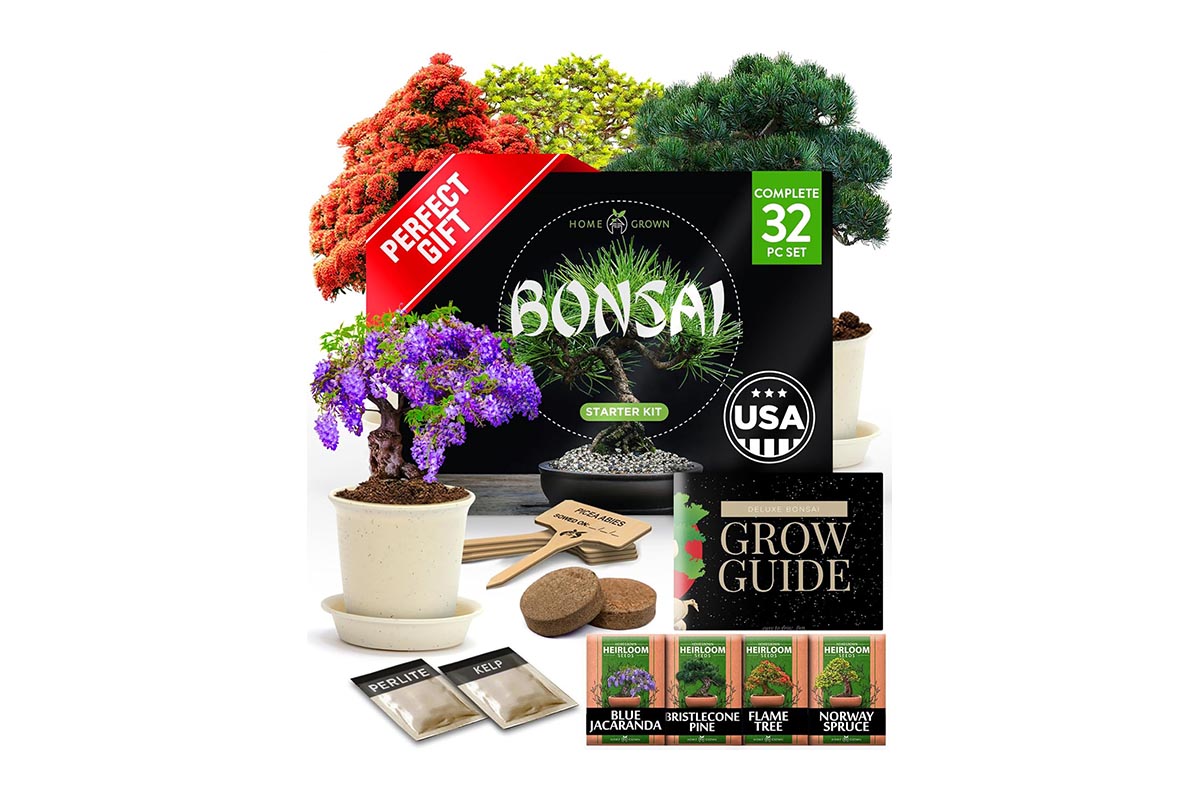
Growing a bonsai tree is a lesson in patience and an opportunity for relaxation. Spoil your plant lover with this distinctive Home Grown Bonsai Tree Kit that includes everything needed to plant and nourish four kinds of bonsai plants. They’ll get to watch these traditional plants grow from a seedling into a magnificent specimen.
Get the Home Grown Bonsai Tree Kit at Amazon for $34.95
15. Hytekgro LED Grow Light

For the indoor gardener, the Hytekgro LED Grow Light is an excellent gift that provides light to help plants grow faster and healthier. The two included panels come with blue and white LEDs that are ideal for indoor plants at all stages. After testing ten of the best grow lights, the Hytekgro was our favorite. Each light covers an area 3 feet by 3 feet, so it’s compact but reaches the desired space.
What our tester says: “I hung the Hytekgro lights over flowering seedlings I purchased for transplanting in the garden, and I turned the panels on for 16 hours daily. The seedlings didn’t grow in height too much during the weeks I tested the lights, but they did fill out, and more blooms appeared.” –Debbie Wolfe, contributing writer and editor
Get the Hytekgro LED Grow Light at Amazon for $49.99
16. Crocs Men’s and Women’s Classic Clog

It’s hard to deny the kind of comfort a pair of Crocs bring to the feet, and with all the walking, standing, and bending gardeners do, they’re likely to benefit from a pair. The material they’re made of makes them easy to clean, and they can withstand wear and tear over time thanks to their ethylene vinyl acetate sole. Plus, they come in a wide variety of colors and prints to suit whomever you’re shopping for.
Read More: The Best Gardening Shoes
What our tester says: “I found that maintaining and cleaning these clogs was a breeze since it was easy to remove water, dirt, and other small garden debris with a quick spray from the hose.” –Debbie Wolfe, contributing writer and editor
Get the Crocs Men’s and Women’s Classic Clog at Amazon for $49.95
17. MySoil Test Kit
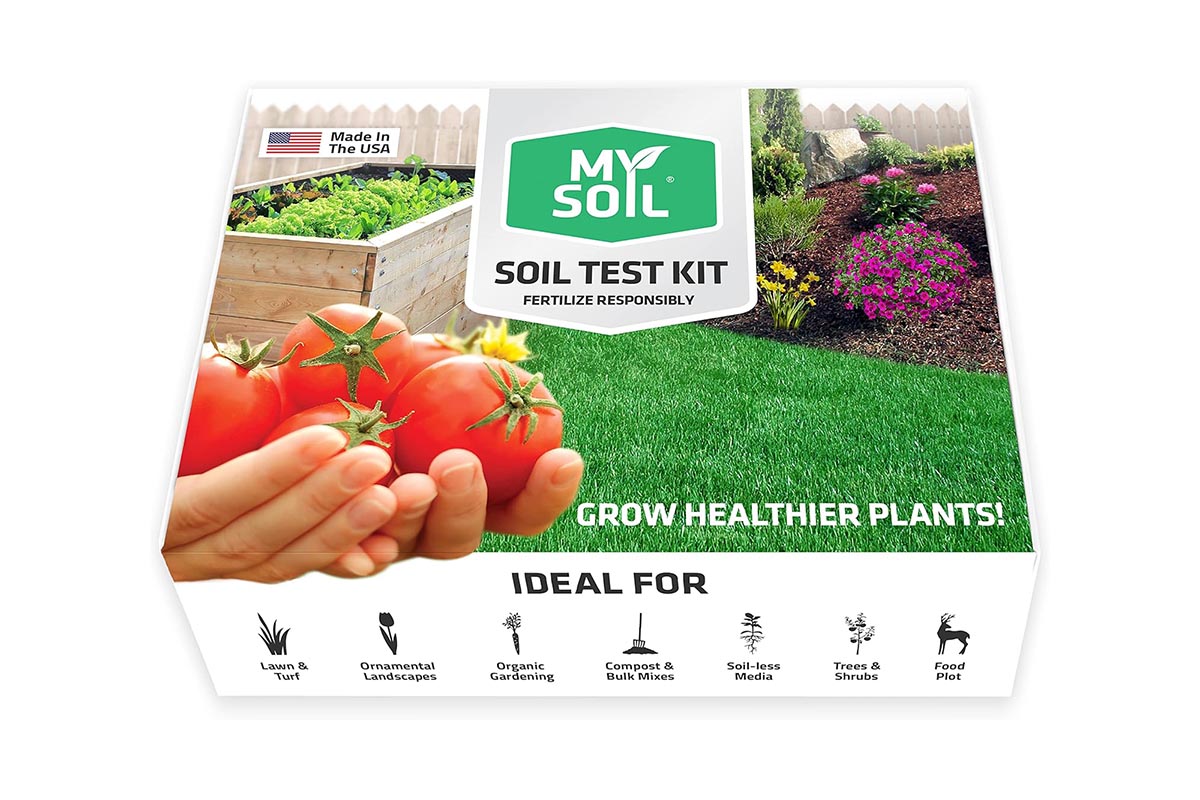
Every experienced gardener knows that healthy soil is the key to a bountiful garden and an at-home soil test kit is the perfect gift to help them identify missing nutrients and correct pH levels. We compared eight of the best soil test kits, and the MySoil test kit was the most accurate compared to our control test from the Kansas State University soil testing lab.
What our tester says: “The lab listed the levels of existing nutrients, including nitrogen, potassium, sulfur, calcium, iron, and more, and then compared my soil’s levels with optimal levels, which were also listed for each nutrient.” –Glenda Taylor, staff writer
Get the MySoil Test Kit at Amazon for $29.99
18. Mini Walk-in Greenhouse Indoor Outdoor
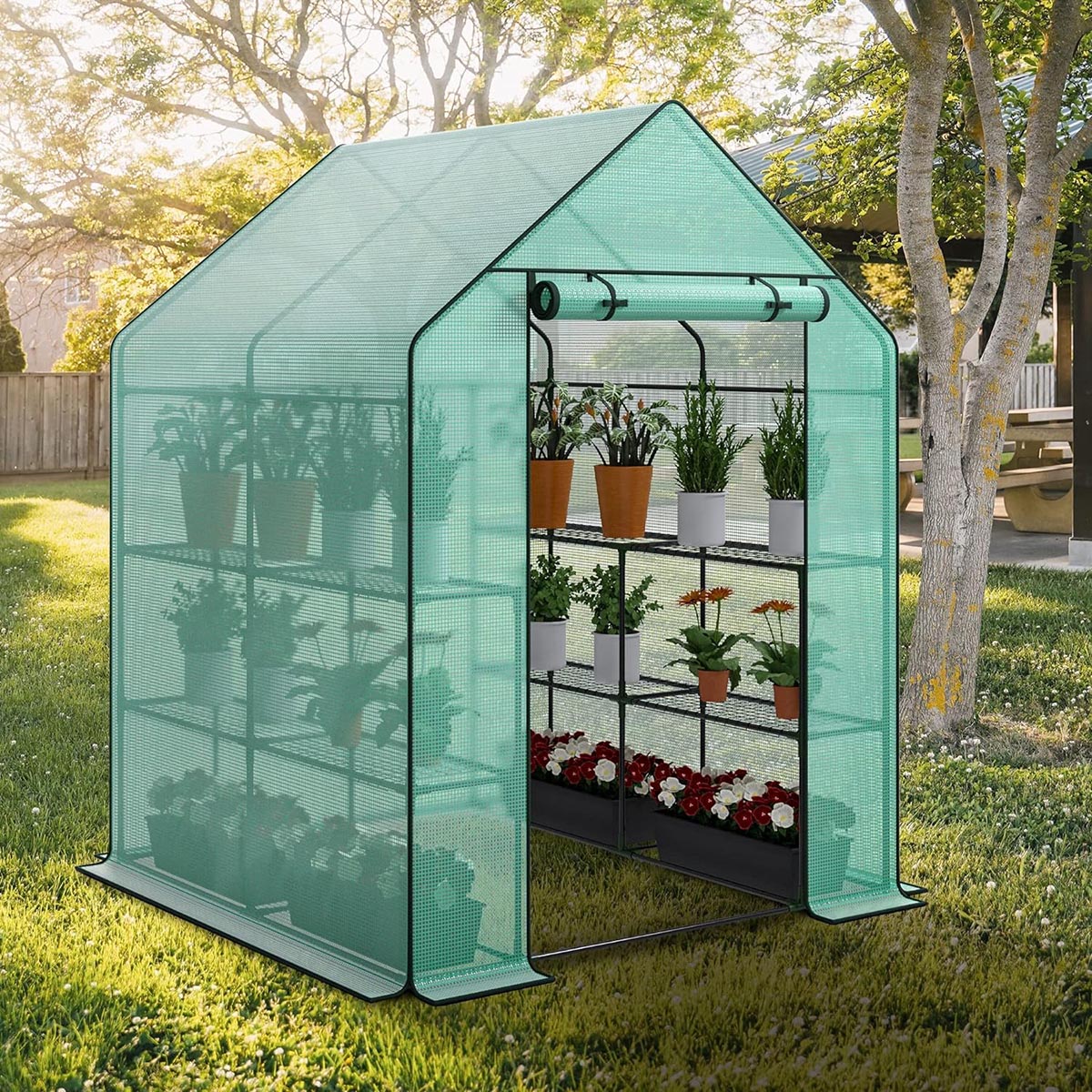
Constructed of a high-quality metal frame and a waterproof PE cover, this Mini Walk-in Greenhouse suits gardeners who like to plant year-round. The cover provides UV protection while also allowing sunlight to pass through and nourish plants. It can also be used to protect plants from pests and harsh outdoor conditions. This mini greenhouse comes with ropes and anchors to make it secure and stable, along with eight shelves to hold potted plants such as vegetables, herbs, and flowers.
Read More: The Best Compact Greenhouse
Get the Mini Walk-in Greenhouse Indoor Outdoor at Amazon for $49.98
19. City Pickers Patio Raised Garden Bed
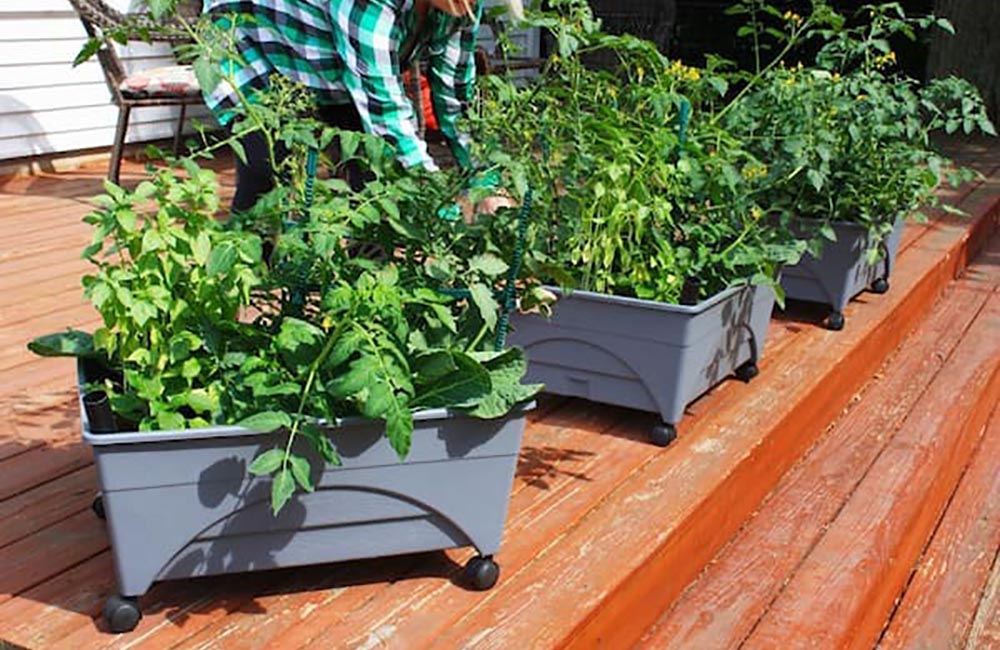
Even plant lovers with large vegetable gardens in their backyard will appreciate this City Pickers Patio Raised Garden Bed, which allows access to homegrown vegetables right off the patio or back porch. It features a self-contained watering system with a two-gallon water reserve and drainage holes so the soil maintains the proper moisture for thriving plants. It’s also a great option for gardeners without sunny spaces in their yards or without yards at all: the beds can be moved to where the sun is or easily be moved around a balcony or patio.
Read More: Best Raised Garden Bed
What our tester says: “The City Pickers Patio raised garden is designed for growing a couple of tomatoes, a few lettuce plants, or a handful of herbs. Right off the bat, I loved the price, which is very affordable compared to the other beds I tested, and the design is well thought out.” –Debbie Wolfe, contributing writer and editor
Get the City Pickers Patio Raised Garden Bed at The Home Depot for $34.99
20. Felco Classic Manual Hand Pruner
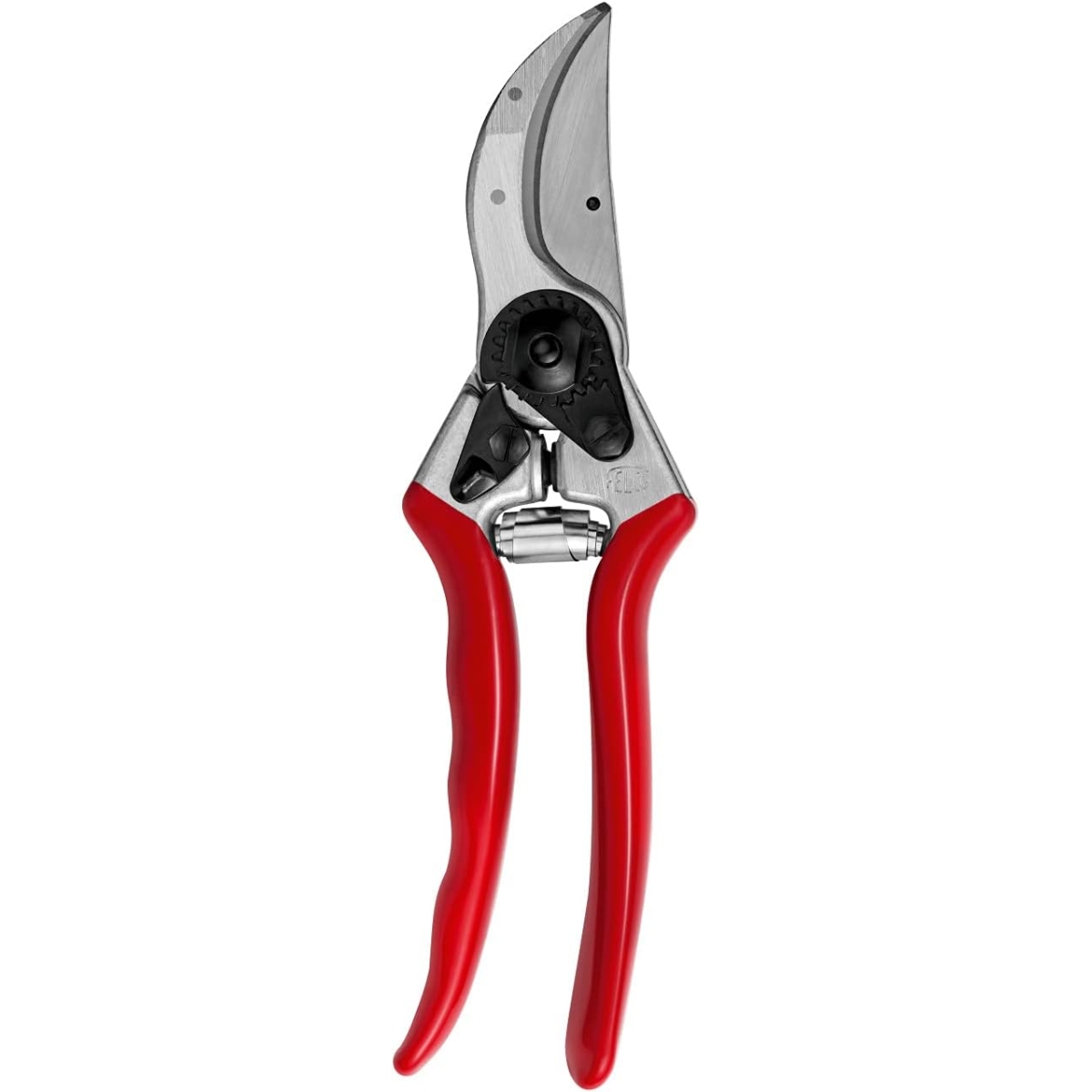
Every gardener needs a good pair of hedge shears, and the forged aluminum handles and hardened steel blades make the Felco Classic Manual Hand Pruner a gift that will last for years and through many seasons of growth. These clippers have a non-slip handle for safety. Cuts with this tool are precise and accurate the first time, so no extra snips are necessary.
What our tester says: “The Felco 2 bypass pruners were a pleasure to test. I used them to cut through hard holly branches up to about an inch thick, and the thin, hard-steel blade had no trouble at all.” –Savannah Sher, contributing writer
Get the Felco Classic Manual Hand Pruner at Amazon for $62.46
21. HydroTech 100-Foot Expandable Burst Proof Hose
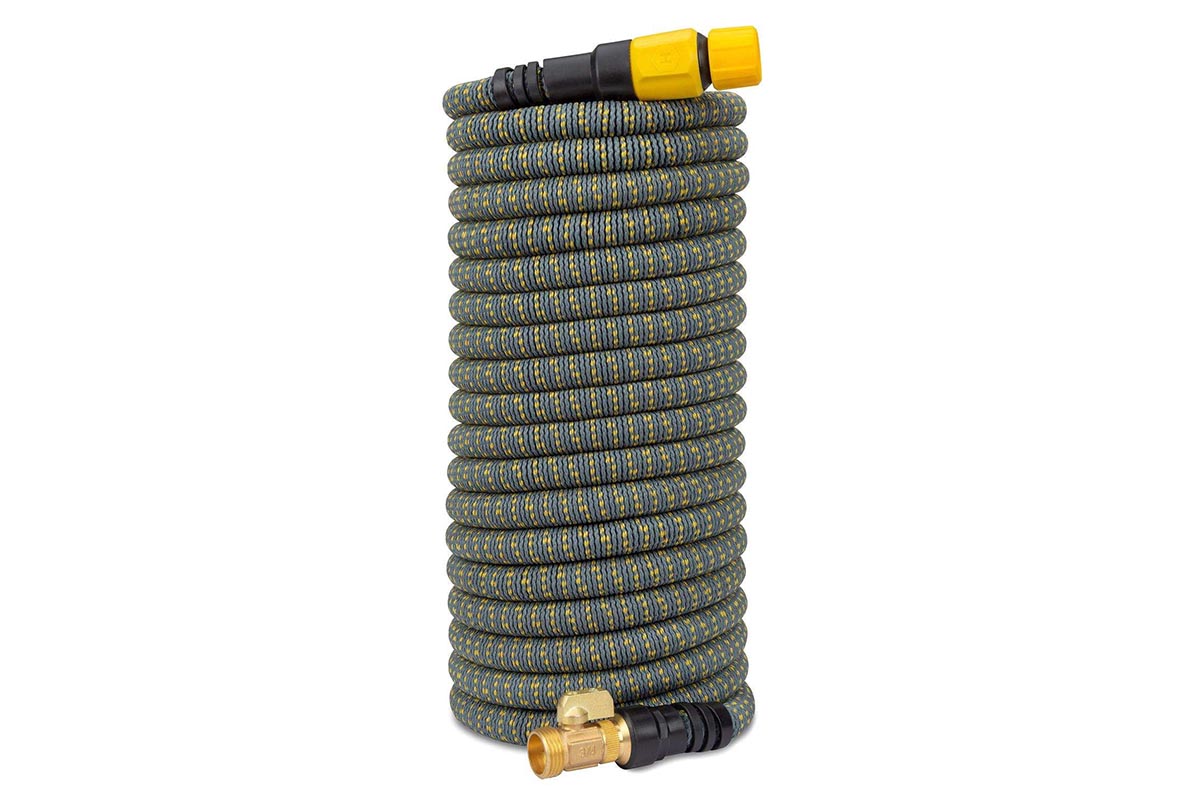
Expandable and burst-proof, the HydroTech 100-Foot Expandable Burst Proof Garden Hose is a convenient addition to any yard or garden. It measures 100 feet long and is durable, flexible, and lightweight. We tested this hose in our best expandable hose guide, and we appreciate its heavy-duty connectors and tear-, leak-, and rip-resistant hose material.
Read More: The Best Expandable Hose
What our tester says: “I pulled the hose around the corner of concrete steps and through some bushes, but it didn’t snag or rupture. Likewise, backing over it with my car didn’t faze it.” –Mark Wolfe, staff writer
Get the HydroTech 100-Foot Expandable Burst Proof Hose at Ace Hardware for $69.99
22. Felco Pruning Shears Left-Handed Garden Pruners
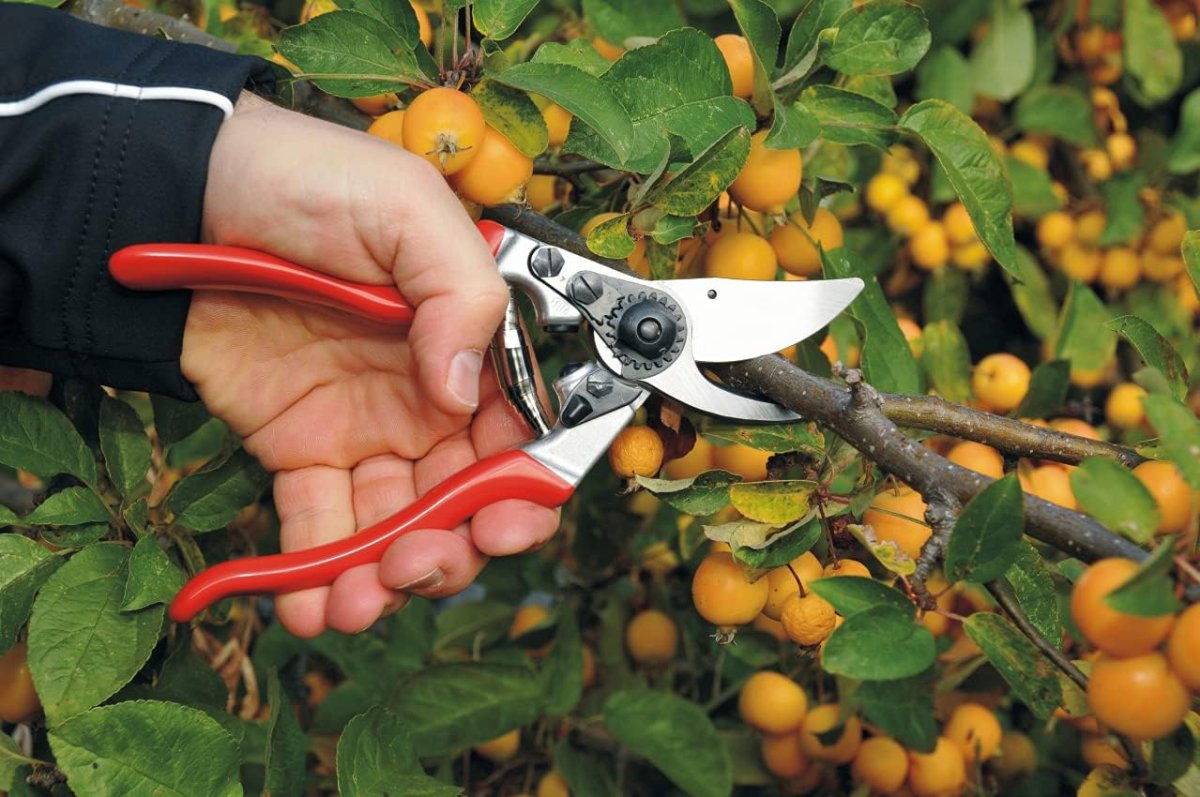
Many left-handed people love to garden, too, and a pair of Felco Pruning Shears Left-Handed Garden Pruners can make their daily gardening tasks less burdensome or uncomfortable. With a rotating handle and shock absorbers, these are the ideal pruners for left-handed people. They’re made of hardened steel blades and forged aluminum handles that provide high performance and reduce blade sticking. These pruners also feature a cushion stop, sap groove, and a wire-cutting notch.
What our tester says: “The Felco 9 felt great in-hand, operated extremely smoothly, and the blade displayed superior sharpness in the cutting tests.” –Glenda Taylor, staff writer
Get the Felco Pruning Shears Left-Handed Garden Pruners at Amazon for $60.08
23. Apollo Garden Tool Set
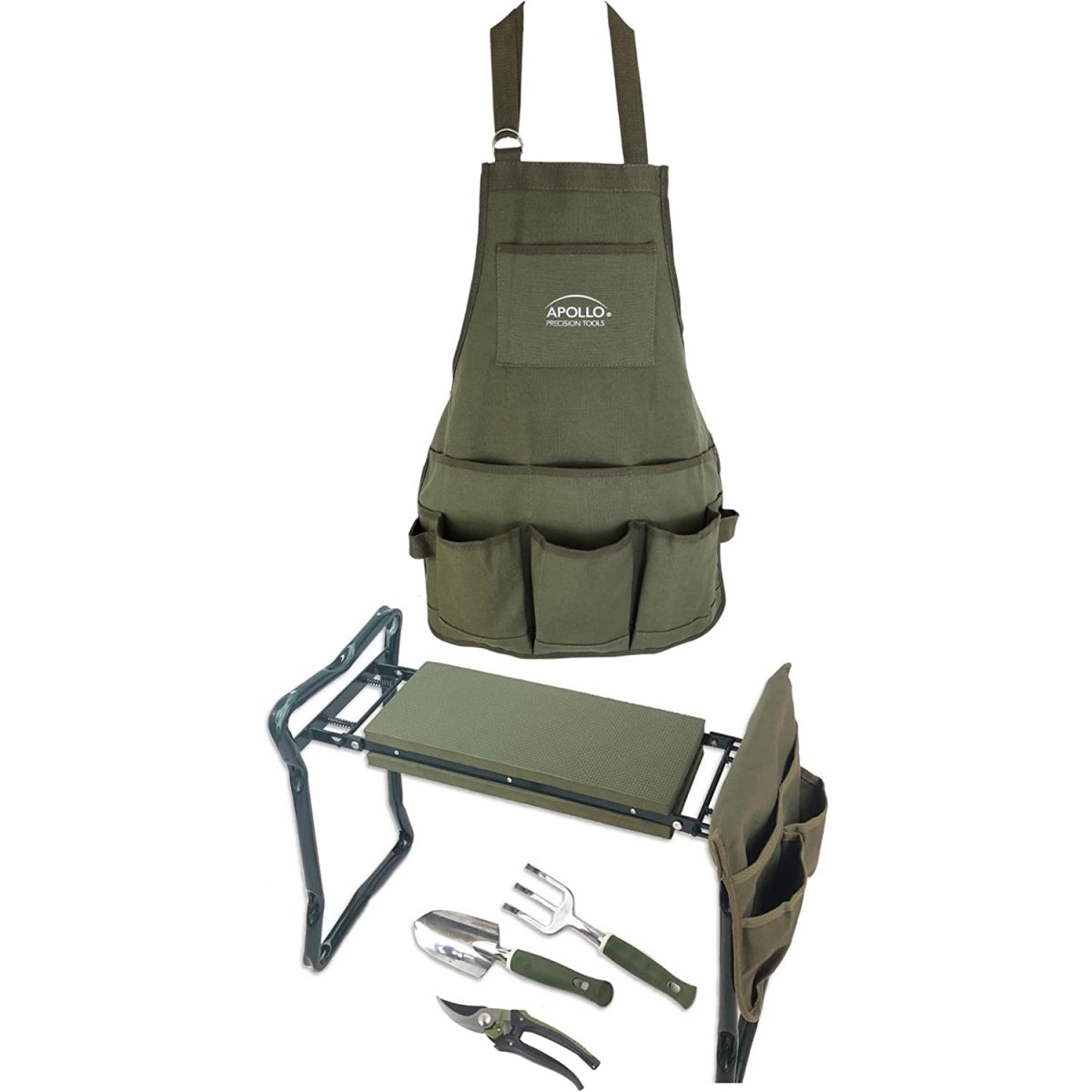
The Apollo Garden Tool Set comes with all the essentials for gardeners, including an apron with multiple pockets, a foldable kneeler, a trowel, a rake, and a pruner. The apron fits a wide range of waist sizes and has a closeable large pocket that closes to keep cell phones or other important items safe. The foldable kneeler also doubles as a seat for breaks on hot days or to protect knees if the user prefers to kneel.
Get the Apollo Garden Tool Set at The Home Depot for $50.99
24. FCMP Outdoor Store IM4000 Dual Chamber Composter
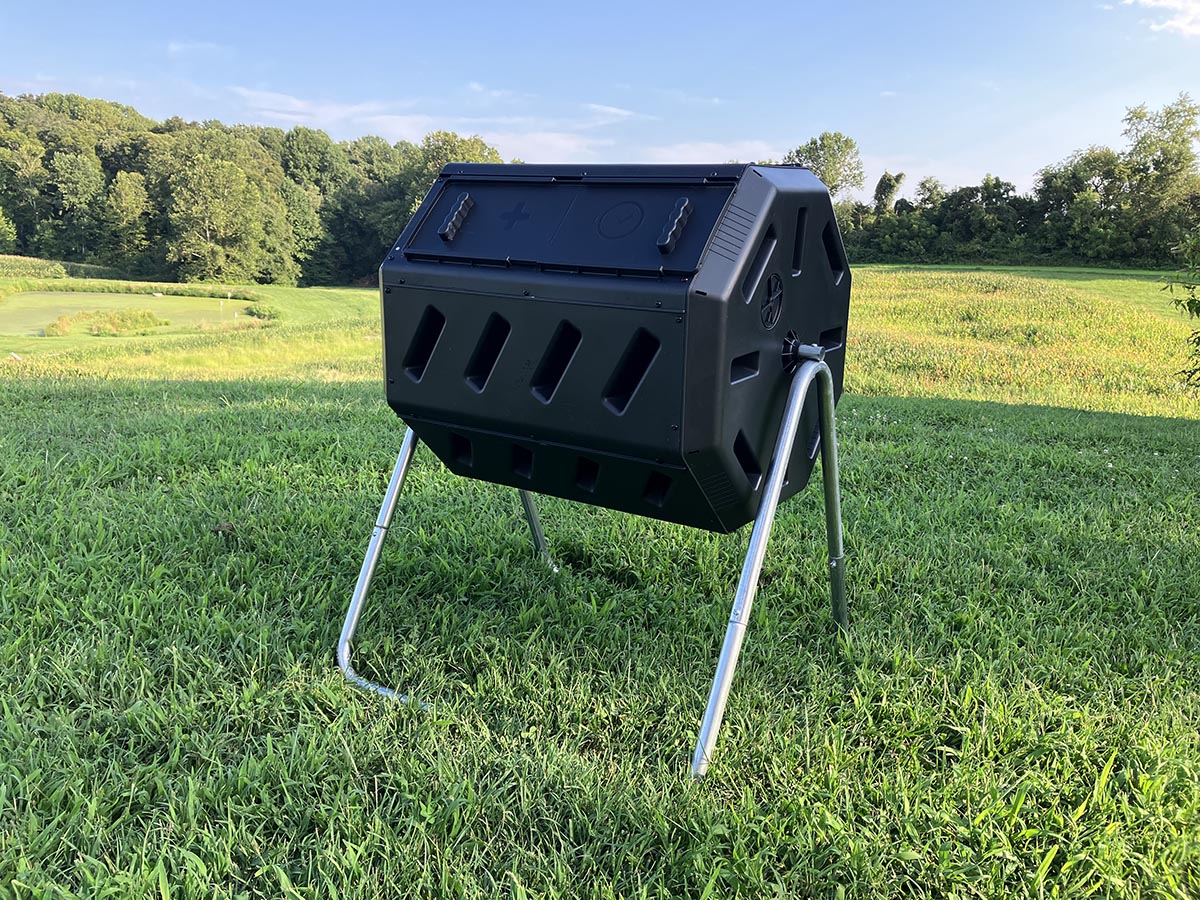
A great gift for gardeners who also practice sustainability, the IM4000 Dual Chamber Tumbling Composter by FCMP Outdoor Store allows users to compost in batches thanks to two efficient chambers. One chamber “cooks” material while the other remains open for adding new compost. The rotating design keeps users from having to mix materials by hand; they can simply add items, close the sliding door, and give it a spin.
Read More: The Best Compost Bin
What our tester says: “I have tested the FCMP Outdoor composter multiple times—sometimes for months on end—and never noticed any deterioration. Its durable construction held up without fail when sitting outside through several seasons in very hot temperatures as well as freezing ones.” –Jenn Ryan, contributing writer
Get the FCMP Outdoor Store IM4000 Dual Chamber Composter at Amazon for $77.28
25. Back to the Roots Indoor Aquaponic Garden
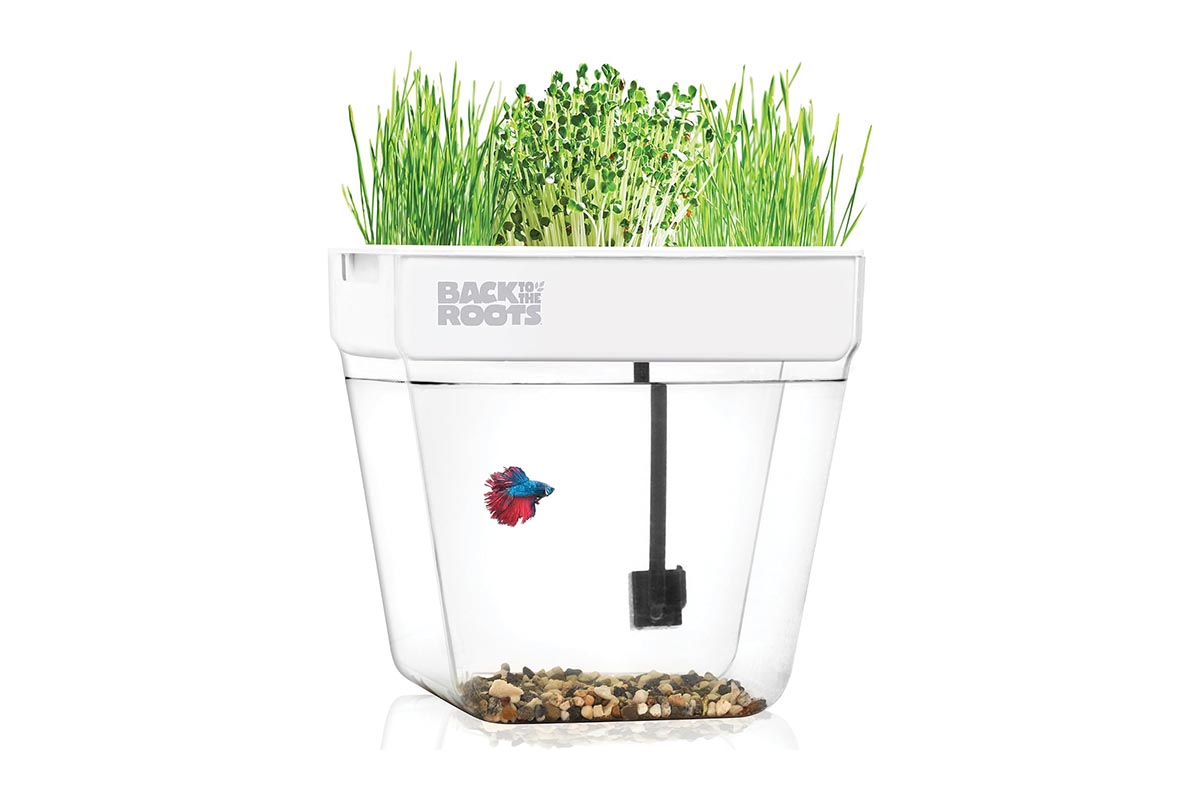
The Back to the Roots Indoor Aquaponics Garden enables users to grow microgreens or succulent gardens. It features a fish tank on the bottom and a growing tray on the top, allowing the fish waste to fertilize the plants and the plants to clean the water. The garden comes with everything a home gardener would need to get started, including seeds, water conditioner, and fish food.
Read More: Best Indoor Garden
What our tester says: “This aquaponic garden is low maintenance, and it’s an excellent way to teach children about ecosystems. While it will produce sprouts and microgreens, I felt its true value to be its educational aspect.” –Jenn Ryan, contributing writer
Get the Back to the Roots Indoor Aquaponic Garden at Amazon for $79.99
26. Keter Urban Bloomer Raised Garden Bed
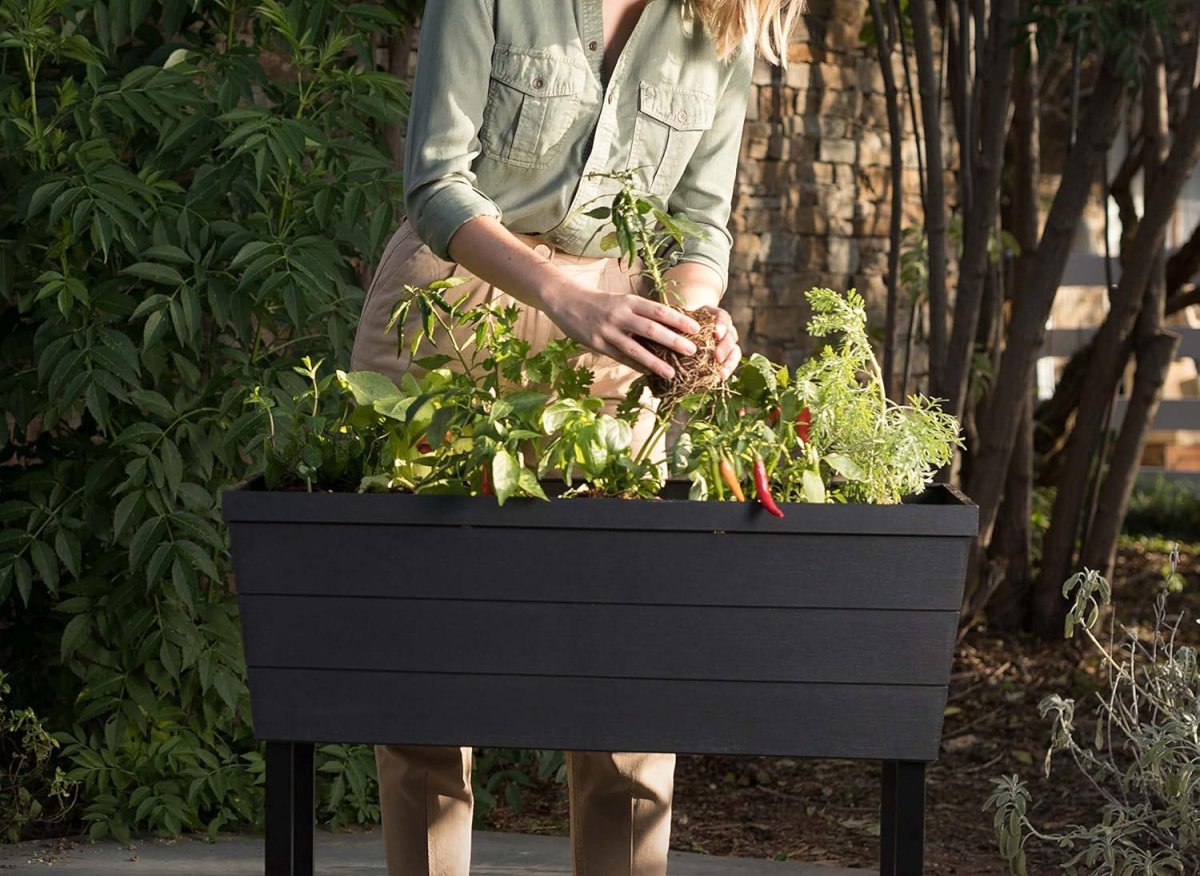
An excellent gift for gardeners with small outdoor spaces, the Keter Urban Bloomer Raised Garden Bed fits neatly on balconies or patios at 32.3 inches long by 14.7 inches wide. This raised garden bed includes an easy-to-read water gauge that helps users see when plants need to be watered, so there’s no guesswork involved. Its full watering system includes a reservoir to prevent root decay and overwatering, making plants more likely to thrive.
Read More: Best Raised Garden Bed
What our tester says: “The Keter Urban raised bed takes all of the guesswork out of watering. It features a vertical tube that runs from the top of the bed to the bottom of the water tray. Inside the tube is a cute little plastic flower that rises with the water level.” –Debbie Wolfe, contributing writer and editor
Get the Keter Urban Bloomer Raised Garden Bed at Amazon for $99.99
27. Muck Boot Women’s Rain Boot
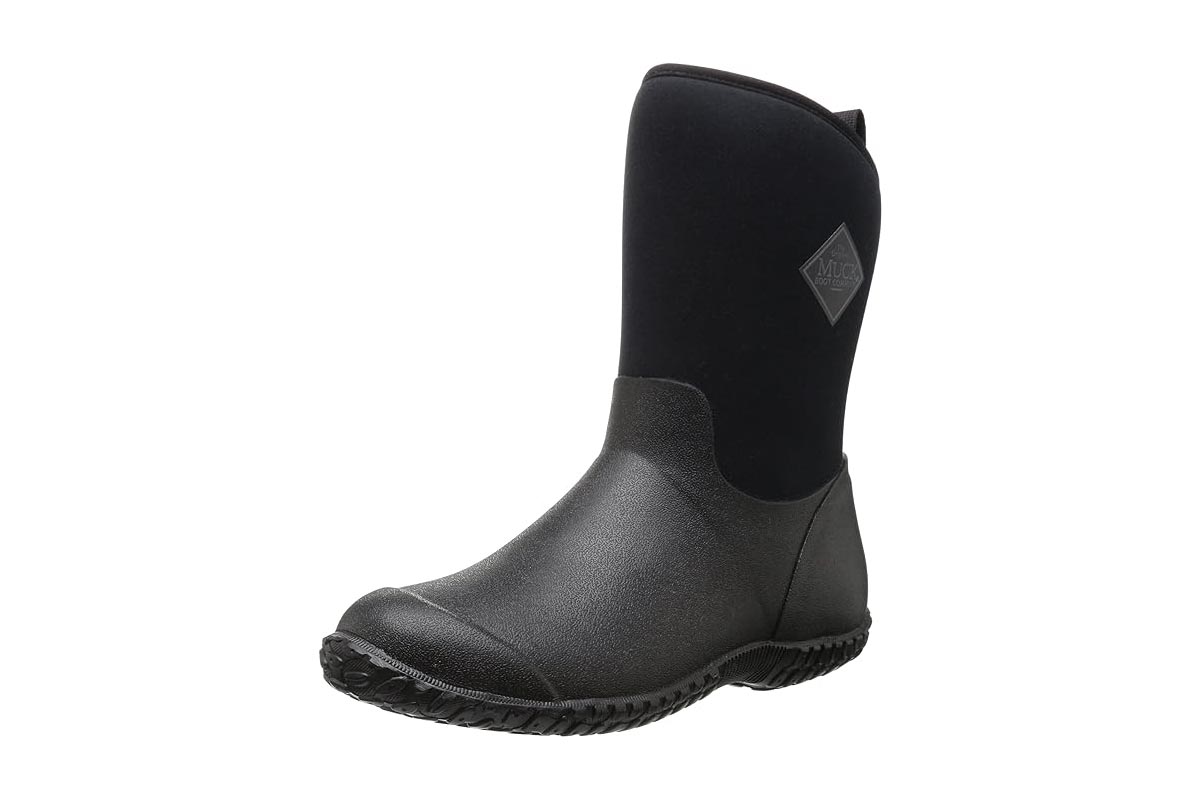
Gardeners can keep their feet dry and protected from the elements while wearing the Muck Boot Women’s Rain Boot. These rubber shoes are designed to shed debris, which make them ideal for long days of trimming or planting. They’re easy to take on and off and can be used for multiple occasions, from gardening and walking the dog to running to the grocery store.
Get the Muck Boot Women’s Rain Boot at Amazon for $81.99
28. Convenience Concepts Deluxe Potting Bench
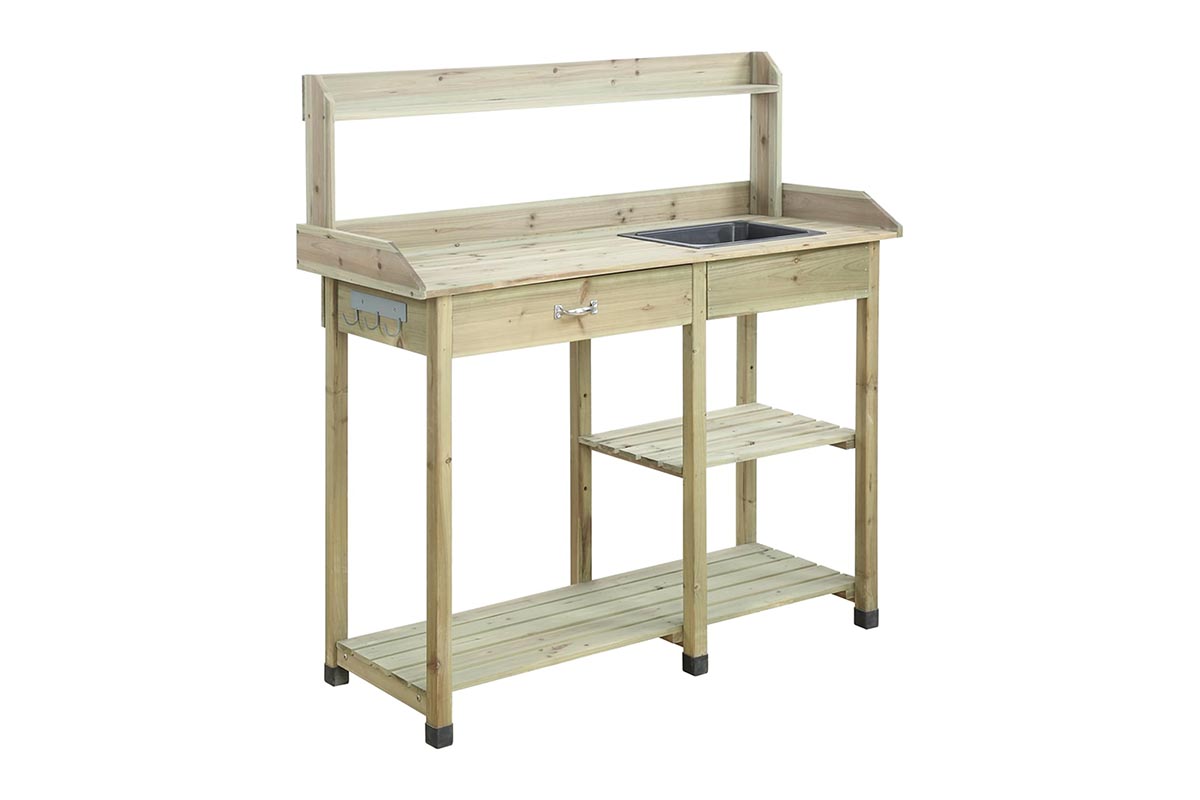
With a spacious surface for working, the Convenience Concepts Deluxe Potting Bench provides a solid work space to keep all gardening essentials organized. We tested this product for our best potting benches guide and appreciated the durable sink, large drawer for tools or gadgets, open shelves, and pre-attached side hooks for easy access to everyday tools. It’s a handsome choice for any hobby gardener.
What our tester says: “This potter’s bench with sink has a drawer and two shelves, offering ample storage space for all of my gardening tools and supplies. This thoughtful feature allowed me to keep everything neatly organized and within easy reach, enhancing my gardening experience.” –Debbie Wolfe, contributing writer and editor
Get the Convenience Concepts Deluxe Potting Bench at Amazon for $139.29
29. Worx WG430 13-Amp Electric Leaf Mulcher
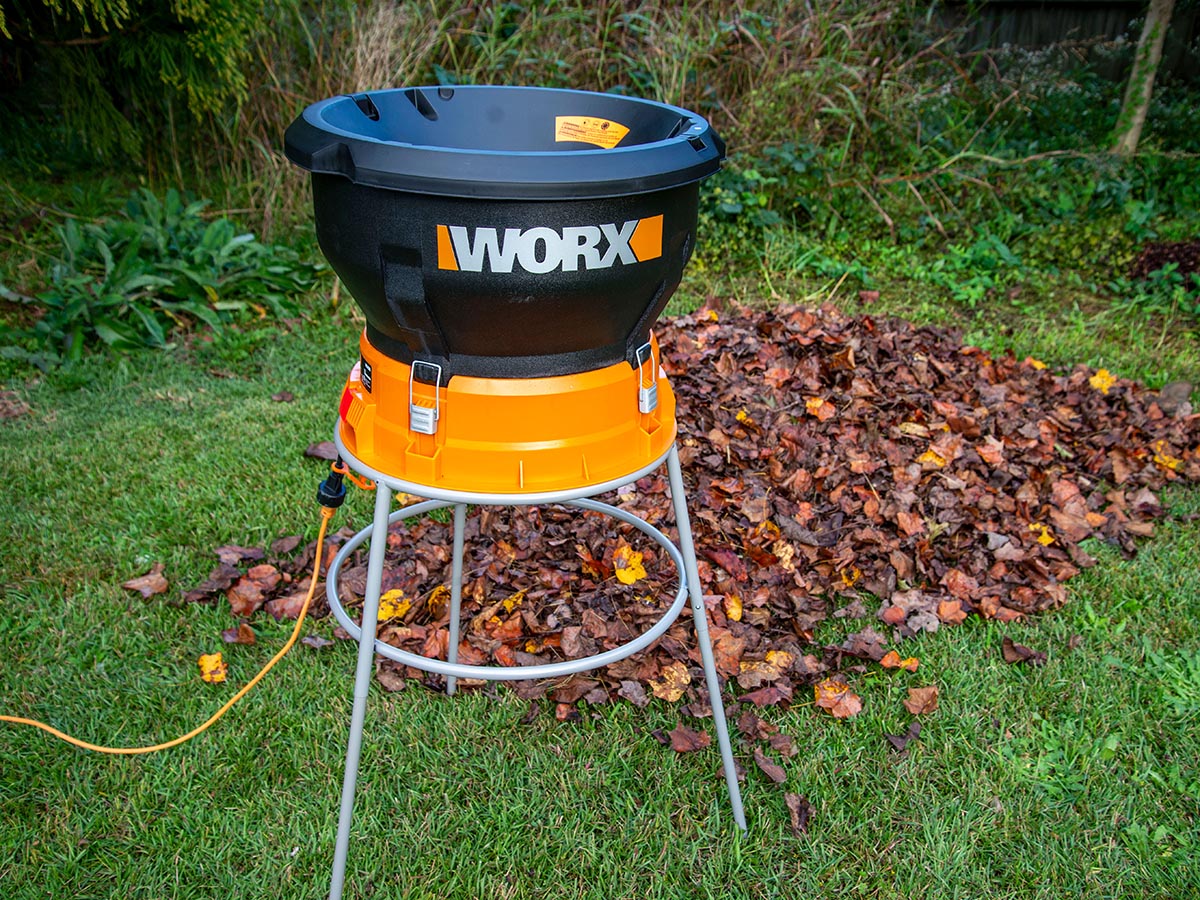
Boasting a compact, lightweight design, the WorkX electric leaf mulcher allows gardeners to mulch fallen leaves quickly. We tested nine of the best leaf mulchers on the market, and this one topped our list thanks to its affordability and efficiency. It makes a great gift for gardeners who use leaf mulch for their perennials or are looking for a fast way to clean up the yard.
Read More: Best Leaf Mulcher
What our tester says: “The Worx WG430 shreds much faster than any blower/vacuum-type leaf mulcher I tested. I dropped leaves into the hopper by the armload (or basket full), and they were gone before I could pick up the next load, allowing me to fill a 30-gallon trash bag with shredded leaves in less than 5 minutes.” –Glenda Taylor, staff writer
Get the Worx WG430 13-Amp Electric Leaf Mulcher at Amazon for $189.99
30. Tertill Weeding Robot
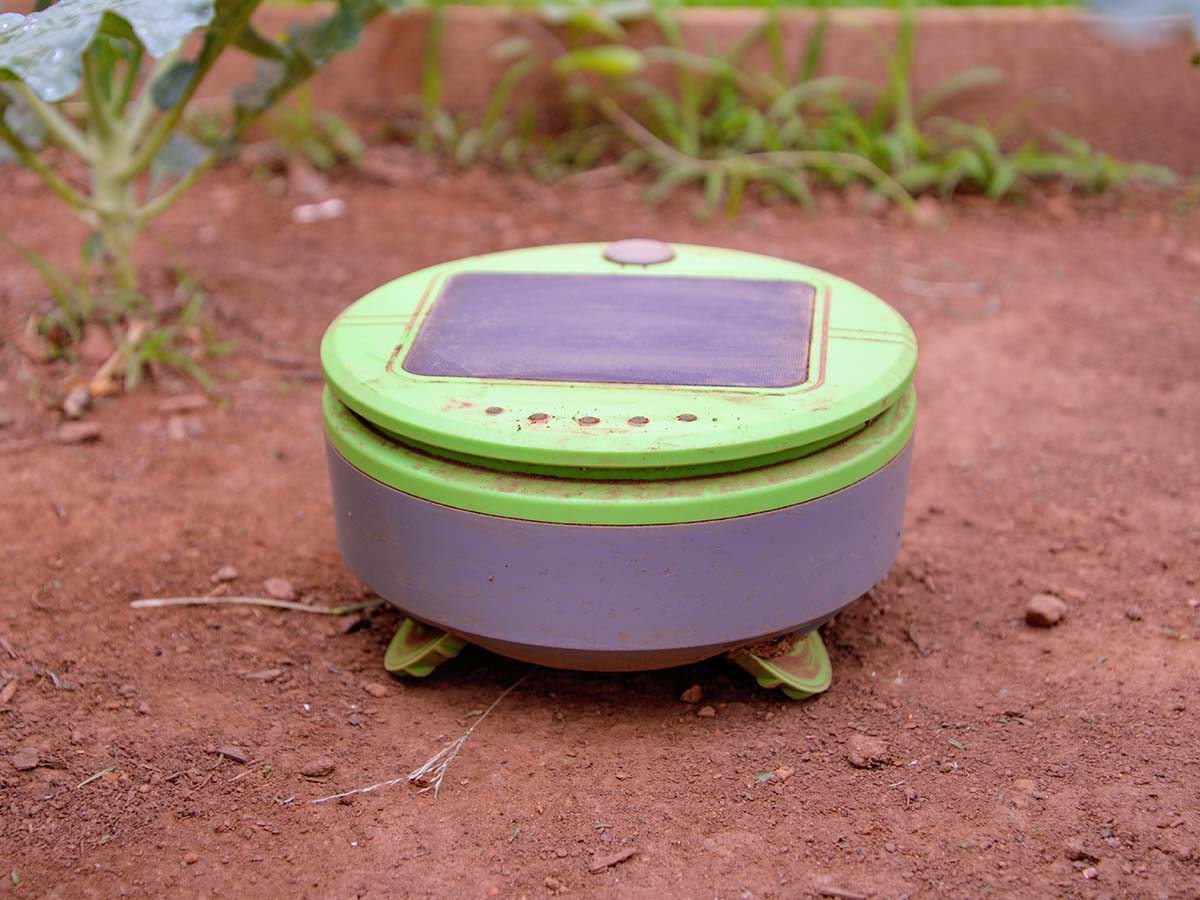
Dealing with weeds is one of the less desirable aspects of gardening, which is where the Tertill Weeding Robot comes in. We tested this weeding robot in a small garden from early August to late September, and it did as promised: it got rid of all the weeds. While this is the most expensive gift on our list, it’s invaluable for those with bad backs or who want to simplify weed removal.
What our tester says: “After one quick and easy software update—downloaded from the Tertill mobile app via Bluetooth connection—the robot simply worked. It did not allow a single weed to grow up, and it only left a narrow band (less than 1 inch wide) of tiny weed sprouts along the bed border and against the seedling stems.” –Mark Wolfe, Product Reviews tester and writer

